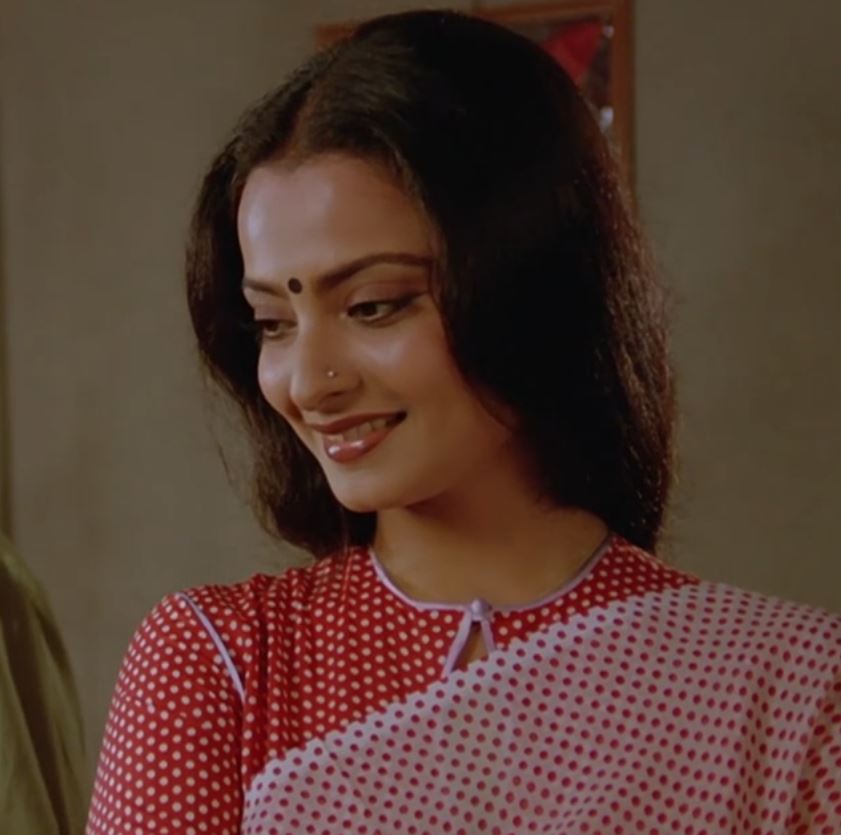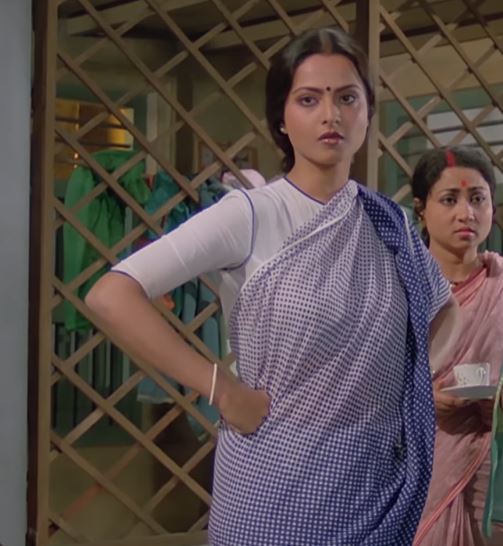Sukhdev’s documentary India ’67 alternately titled An Indian Day, captures life in some parts of India in 1967. The filmmaker’s camera is a restless traveller covering urban and rural life, different geographies, industrialised India as well as agricultural and pastoral India. There are also vignettes of parties, art villages (Cholamandalam), temples and weddings, the stuff of daily life. It also references some of the major events, a Thackeray rally in Mumbai for example as well as the Bihar famine of 1966-1967.
As a result, the documentary captures all segements of society, from the wealthy to the destitute. Though clothing is not at all the focus of the documentary, given its scope it gives us a glimpse of what was worn in everyday life around the late 1960s.






The women in the documentary do have specific styling and clothes that indicate that it is the 60s,e.g. the sarees with short pallus, blouses and make up of pic 5 or the everyday handloom of pic 3. But there is also a bit of a contemporary feel, especially in the images that Sukhdev captures of a group of friends, one of whom is screen-capped in pic 2. There are also many working women in the documentary, often in a lab or the shopfloor.




Sukhdev employs a lot of closeups so you get to see a lot of the ornaments and hair accessories – these screencaps are from the HMT factory in Bangalore. The red resin locket of pic 3 was extremely common in the late 60s and 70s in South India, usually with a gold motif inside. The pink-red stone of the ring of pic 4 is also of the time.




A lot of close ups of head coverings/veils too with the colour red being a connecting feature. I think all of these are taken in Rajasthan amongst rural and pastoral communities. As is apparent, the traditional bandhani as well as textile prints feature.




A few examples of the kind of profuse silver jewellery that was worn as everyday wear, usually in rural India.




Scenes from weddings, three are of a Christian wedding in Mumbai or thereabouts, the last one from Rajasthan. The groom wears a side ornament which I think is called mod. Marigold (as I also mentioned in my post on Gaman) was not as ubiquitous as now, the flower garland here has pink and white flowers (often flowers like rajnigandha and oleander).



Sukhdev also extensively captures images of the working class – in pics 1 and 2 you can see that a short saree without a blouse was still common for agricultural work. The last pic is of people rendered destitute by the Bihar famine of 1966. Though this segment is of a famine and the dire poverty that resulted, much worn and mended clothing as well as hand me downs were common in the 60s if you were poor. The situation is different now – though fast fashion is much decried, it does provide affordable clothing to all segments of society.




More close ups from the film include a rather contemporary bracelet, elegant mojris and the ubiquitous transistor. Tucking a flower above the ear for a temple visit is not so common now but it has an interesting parallel in Bali where it is still prevalent.




Men, traditional and modern, from the documentary.
The documentary, to use the phrase from this article, is a biography of a nascent republic circa 1967. An important record of its time, it is also as this post shows, useful for a serious student of vintage and historical clothing. Do check out!













































































































































































